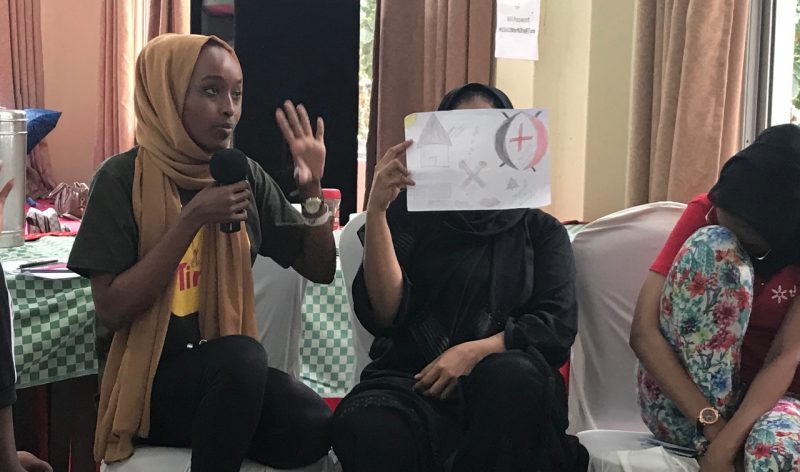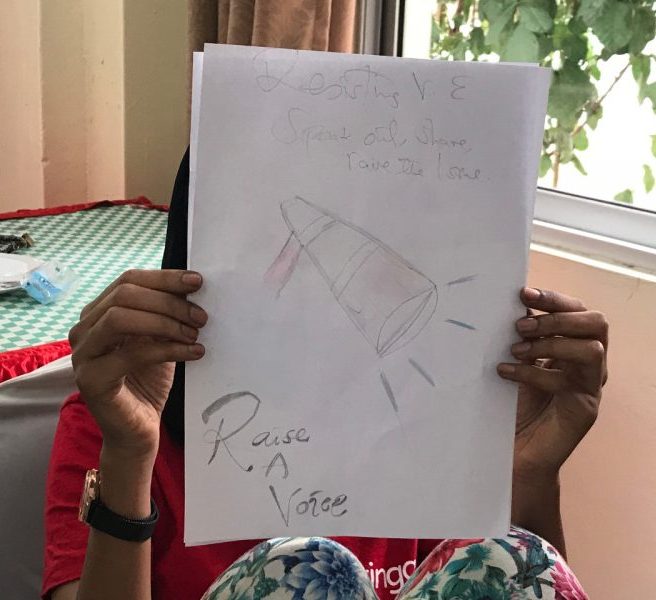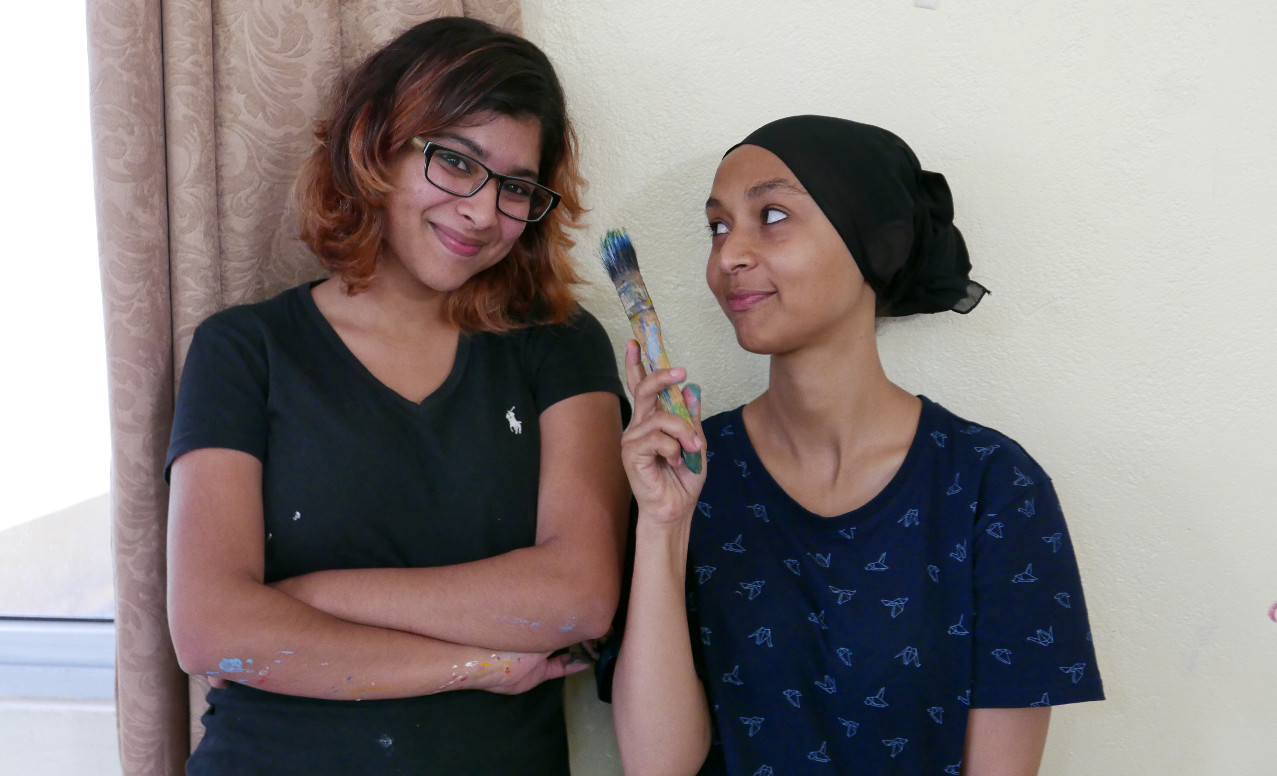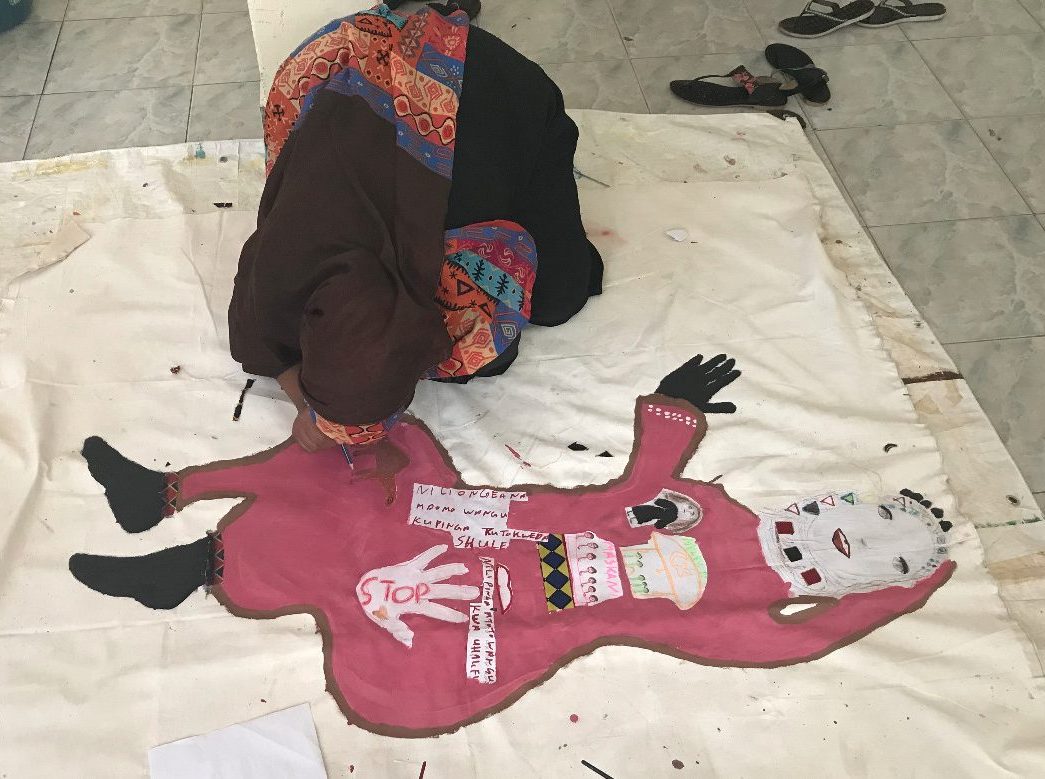The Wokshop
In November 2019, twenty women and men from the coastal region of Kenya gathered in Mombasa for two weeks of ‘Body Map’ workshops. The participants were invited to create a life-sized painting called a ‘body map’ to express their views and experiences of violent extremism and their resistance to it.
Over five days, each workshop became a place for the participants to nurture their skills, grow their knowledge and question their place in and contribution to Kenya. The diversity of the participants enabled a narrative that wove together a tapestry of Kenya in all its complexities – historical, cultural, ethnic, economic, social and political.
The Body Map method

Dealing with Sensitive Topics
Violent extremism is certainly a very sensitive and complex topic. Participants may encounter difficulties in verbalising their feelings and talking about their own experiences of violence and resistance. Body mapping allows the participants to tell their stories and express their feelings and views using non-verbal visual and creative tools in a safe and supportive environment. The lack of reliance on verbal communication is especially beneficial for participants from disadvantaged educational and socio-economic backgrounds as it can help to overcome language and literacy barriers.
Arts as a Tool for Social Change
In this research, we used body mapping not only to understand communities’ everyday experiences of violent extremism and resistance to it but also as a tool for social transformation. Art-based methods are transformative because of their potential to build trust and challenge stereotypes and misconceptions; they also helpfully engage participants in the creation of situated knowledge about their lives. The body mapping workshops created a safe space for participants from diverse and often conflicting ethnic identities, where they could explore personal experiences, emotions, foster mutual understanding and work collaboratively on their different body-mapping projects.

Emotions and Reflection in Arts-Based Research
Throughout the two sets of 5 whole-day workshops, body mapping created a deeper understanding of narratives and lived experiences of violent extremism. Participants made meaning through artistic creation and encountered its transformative power in a process that engaged their physical, emotional, and existential realms.
The body-mapping process brings together bodily experience and visual artistic expression. Whether the journey is emotional, aesthetic, historical, political or cultural, body mapping allows the participants to create new types of testimonies. The two workshops triggered lengthy discussions and exchanges on questions of violent extremism, experiences of violence and insecurity, personal and collective resistance, aspirations, grievances, identity and belonging.

Creating a Body Map
In its most basic form, body mapping involves a person painting a life-sized representation of their own body onto a large surface and adding colours, pictures, symbols and words to show the path that they have taken through life. It can open new, safe and inspiring channels of communication that allow participants to take ownership of the process.
Each workshop was structured as a set of activities that used the same methods, but with some fluidity and adaptation. The participants in the workshop helped each other to trace and create their own body maps.
We asked the participants a set of questions, and their responses were made each time in the form of a drawing on a sheet of paper.
At the end of each individual work session, the content and meanings of the drawing were shared with the other participants in a group discussion.
These same drawings were, at a later stage, placed within the life-sized painting that represented the life and experience of each participant.

